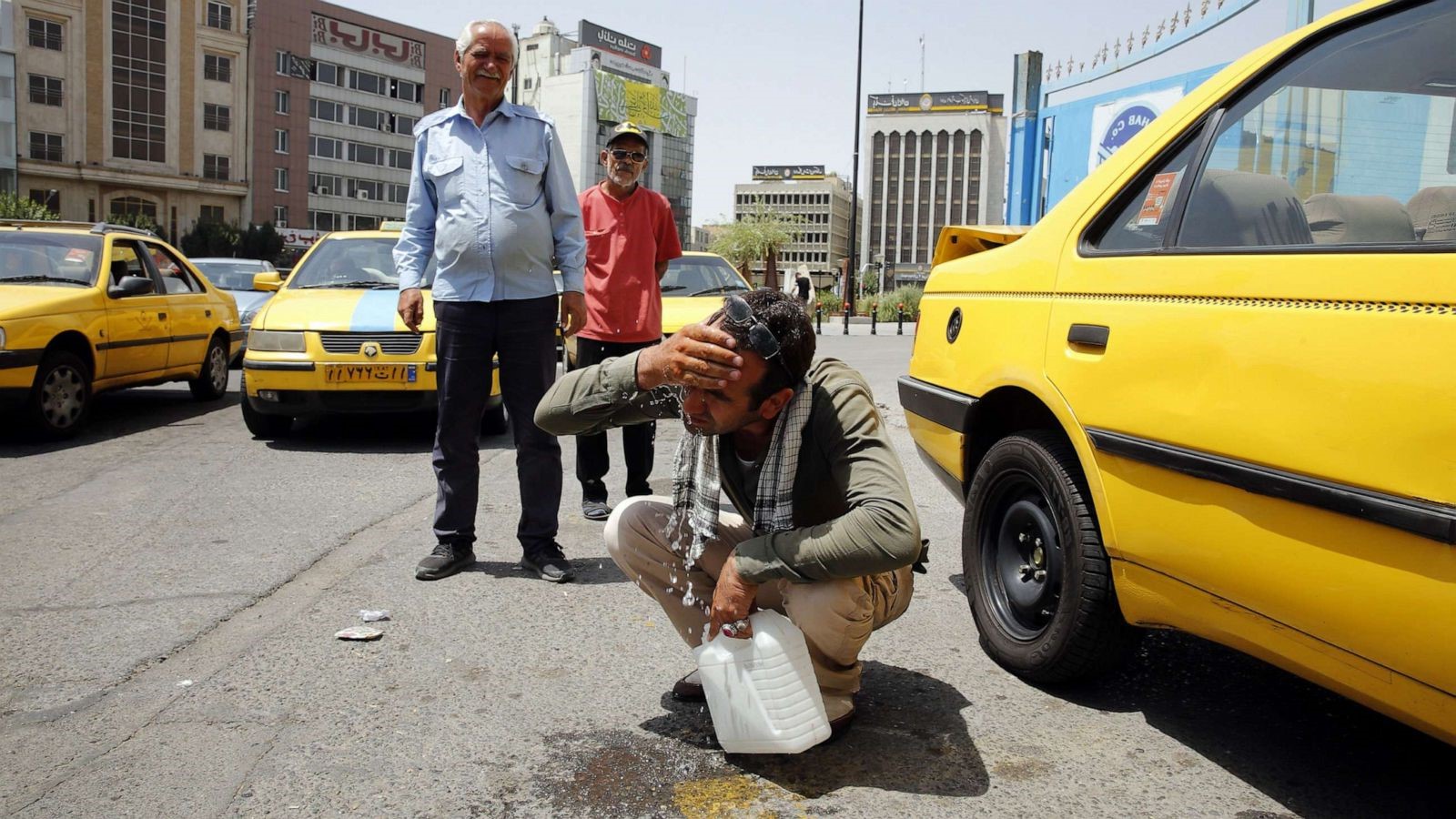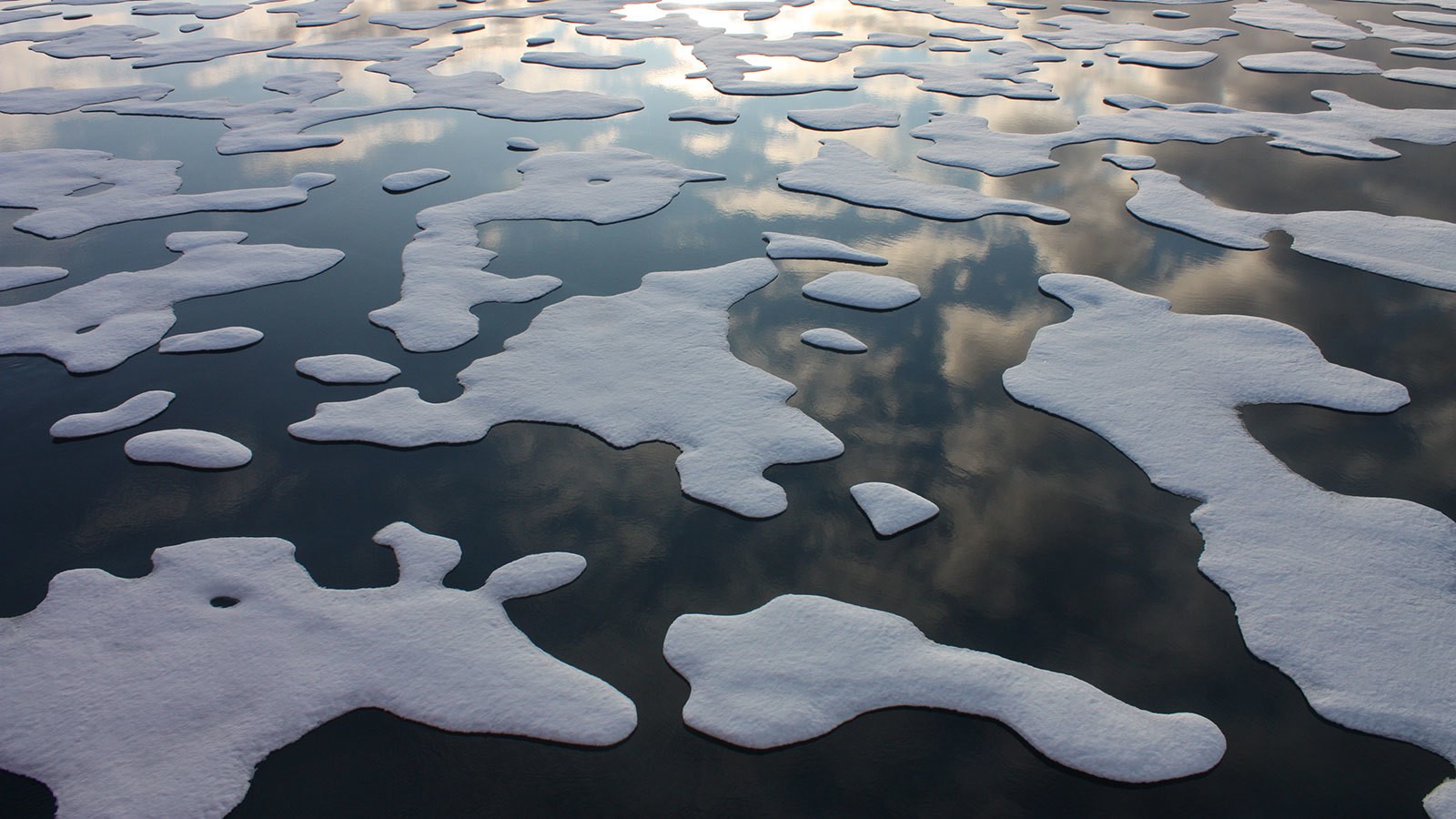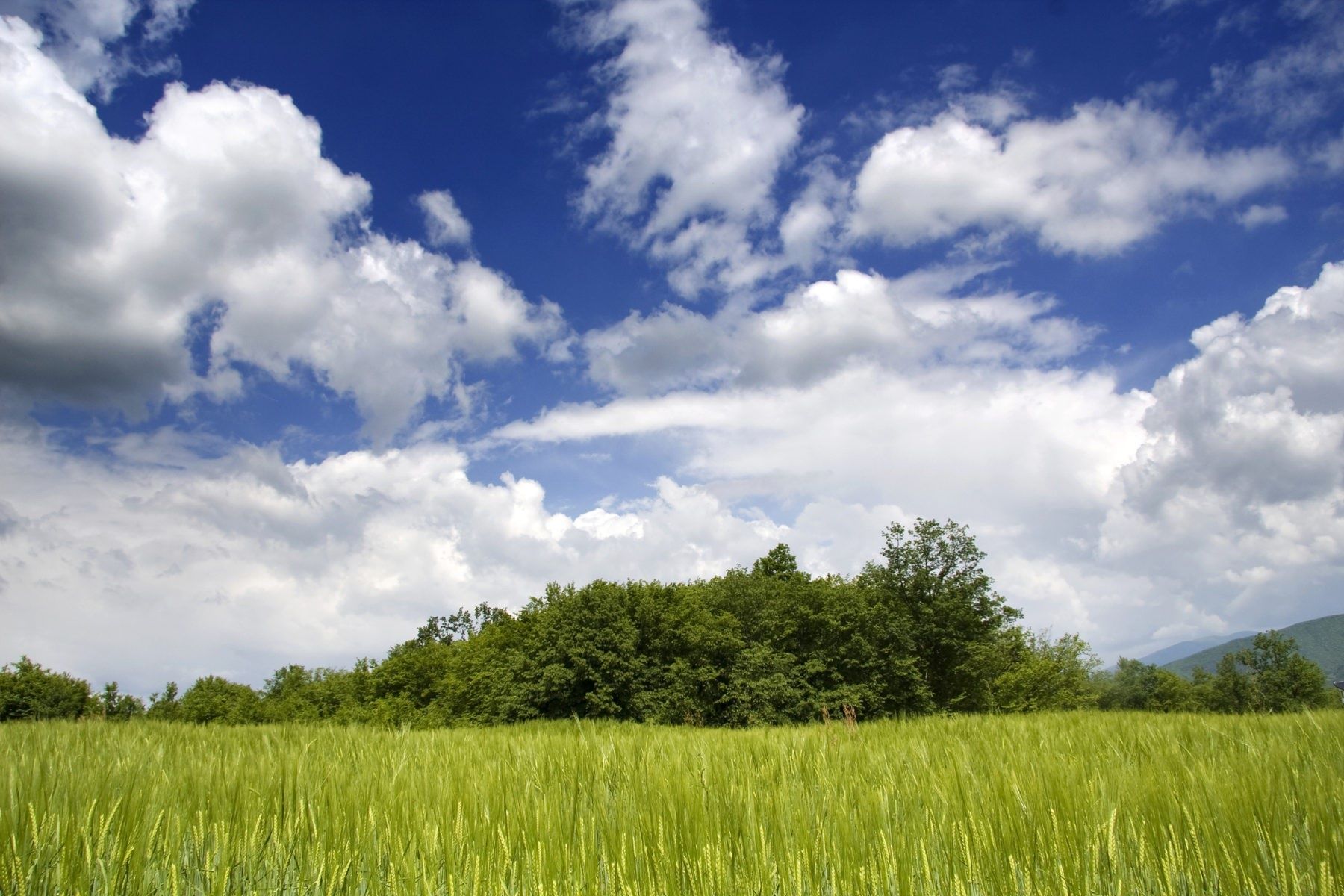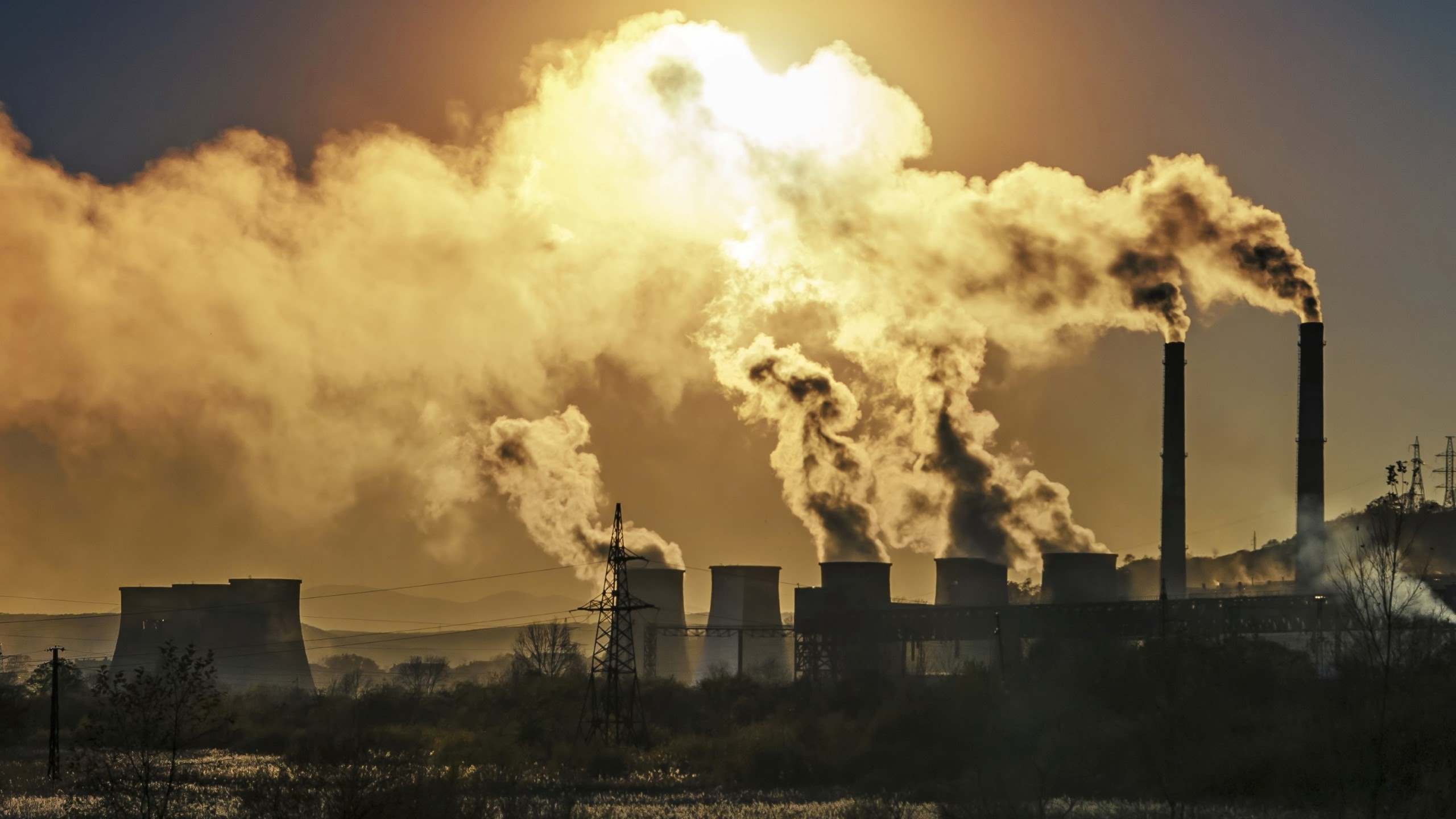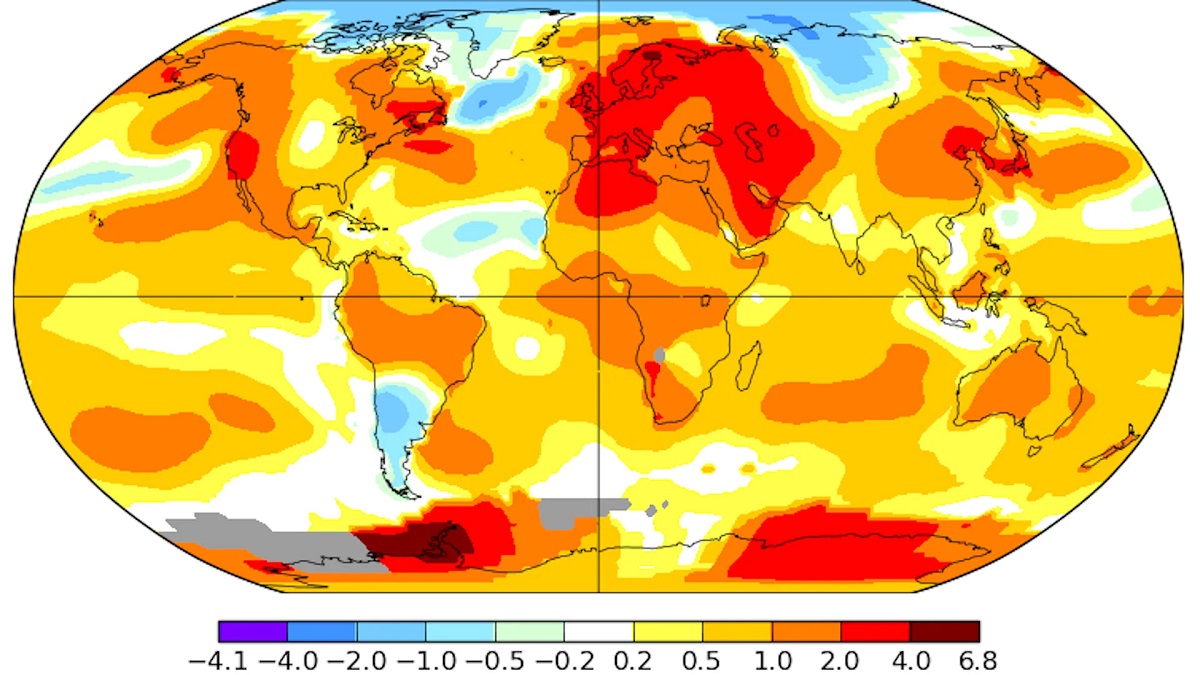Home>Weather and Climate>The Role Of Carbon Dioxide In Earth’s Temperature Rise
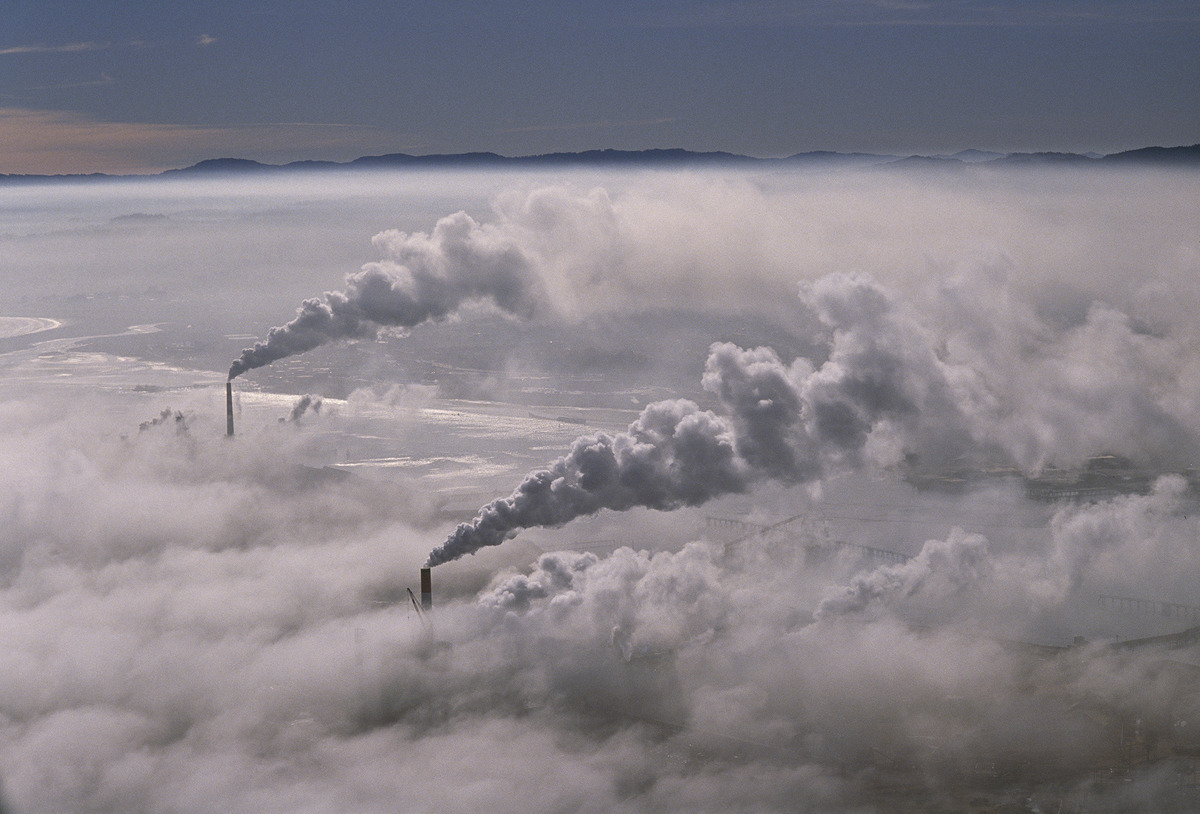

Weather and Climate
The Role Of Carbon Dioxide In Earth’s Temperature Rise
Published: March 6, 2024
Explore the impact of carbon dioxide on Earth's temperature rise and its connection to weather and climate. Learn about the role of CO2 in shaping our planet's environmental conditions.
(Many of the links in this article redirect to a specific reviewed product. Your purchase of these products through affiliate links helps to generate commission for Temperatures.com, at no extra cost. Learn more)
Table of Contents
Introduction
The Earth's climate is a complex and dynamic system that is influenced by a multitude of factors, including atmospheric composition, solar radiation, ocean currents, and human activities. Among these factors, the concentration of greenhouse gases, particularly carbon dioxide (CO2), plays a pivotal role in regulating the planet's temperature. The interplay between greenhouse gases and the Earth's temperature is a critical aspect of climate science, with far-reaching implications for ecosystems, weather patterns, and human societies.
Understanding the relationship between carbon dioxide and global temperatures is essential for comprehending the current climate crisis and formulating effective strategies to mitigate its impacts. As human activities, such as the burning of fossil fuels and deforestation, continue to release unprecedented amounts of CO2 into the atmosphere, the need to grasp the mechanisms driving the Earth's temperature rise becomes increasingly urgent.
In this article, we will delve into the intricate interconnections between carbon dioxide and the Earth's temperature, exploring historical trends in CO2 levels, the impact of rising concentrations on global temperatures, feedback loops that amplify temperature rise, and potential mitigation strategies. By shedding light on these crucial aspects, we aim to provide a comprehensive understanding of the role of carbon dioxide in driving the Earth's temperature increase and the implications for the planet's future.
The journey into the realm of climate science and carbon dioxide's influence on global temperatures is a fascinating and enlightening expedition. Let's embark on this exploration to unravel the mysteries of Earth's climate system and gain insights into the profound significance of carbon dioxide in shaping the planet's thermal equilibrium.
The Greenhouse Effect and Carbon Dioxide
The greenhouse effect is a natural phenomenon that plays a crucial role in maintaining the Earth's temperature within a habitable range. It involves the interaction of solar radiation with the Earth's atmosphere and surface. When sunlight reaches the Earth, some of it is absorbed and warms the surface, while the rest is reflected back towards space. The heated surface then emits infrared radiation, which is absorbed and re-radiated by greenhouse gases in the atmosphere, trapping heat and preventing it from escaping into space. This process effectively acts as a thermal blanket, keeping the planet warm enough to sustain life.
Among the various greenhouse gases, carbon dioxide (CO2) is one of the most significant contributors to the greenhouse effect. While CO2 is naturally present in the atmosphere, human activities, such as the burning of fossil fuels, industrial processes, and deforestation, have significantly increased its concentration. This heightened level of CO2 amplifies the greenhouse effect, leading to a rise in global temperatures, a phenomenon commonly referred to as global warming.
The relationship between the greenhouse effect and carbon dioxide is intricately linked to the Earth's energy balance. As the concentration of CO2 and other greenhouse gases increases, more heat is trapped within the atmosphere, causing a gradual but persistent warming of the planet. This warming trend has far-reaching consequences, including shifts in weather patterns, accelerated melting of polar ice caps and glaciers, and disruptions to ecosystems and biodiversity.
Understanding the pivotal role of carbon dioxide in the greenhouse effect is essential for comprehending the mechanisms driving climate change. By recognizing the impact of human activities on CO2 levels and its implications for global temperatures, we can take proactive measures to mitigate the adverse effects of anthropogenic global warming. Through concerted efforts to reduce carbon emissions and transition towards sustainable energy sources, we can strive to restore the delicate balance of the Earth's climate system and safeguard the well-being of current and future generations.
The intricate interplay between the greenhouse effect and carbon dioxide underscores the urgency of addressing climate change and underscores the need for collective action to mitigate its impacts. As we delve deeper into the historical trends in CO2 levels and the impact of rising concentrations on global temperatures, we will gain a comprehensive understanding of the profound significance of carbon dioxide in shaping the Earth's thermal equilibrium.
Historical Trends in Carbon Dioxide Levels
The historical trends in carbon dioxide (CO2) levels provide invaluable insights into the long-term dynamics of atmospheric composition and its impact on the Earth's climate. By examining records of CO2 concentrations spanning hundreds of thousands of years, scientists have uncovered compelling evidence of the significant role played by this greenhouse gas in shaping the planet's thermal equilibrium.
Ice core samples extracted from polar regions, particularly Antarctica, have served as a time capsule, preserving ancient air bubbles that offer a glimpse into the atmospheric composition of bygone eras. Through meticulous analysis of these ice cores, researchers have reconstructed a comprehensive timeline of CO2 levels, revealing fluctuations and trends that have unfolded over millennia.
The data derived from ice core studies indicate that for the majority of the past 800,000 years, CO2 concentrations remained relatively stable, fluctuating between approximately 180 parts per million (ppm) during glacial periods and around 280 ppm during interglacial periods. However, the onset of the industrial revolution in the 18th century marked a pivotal turning point, as human activities began to release unprecedented quantities of CO2 into the atmosphere.
The combustion of fossil fuels, deforestation, and industrial processes have collectively contributed to a substantial increase in atmospheric CO2 levels, propelling concentrations to levels not witnessed in hundreds of thousands of years. In recent decades, the atmospheric CO2 concentration has surged beyond 400 ppm, surpassing the natural range observed in the pre-industrial era.
This dramatic escalation in CO2 levels is a testament to the profound impact of human activities on the Earth's atmospheric composition. The historical trends underscore the magnitude of anthropogenic influence on the planet's climate system, highlighting the urgency of addressing the escalating levels of greenhouse gases to mitigate the adverse effects of climate change.
The historical trends in carbon dioxide levels serve as a stark reminder of the unprecedented departure from natural variability induced by human activities. As we delve into the impact of rising CO2 concentrations on global temperatures and the feedback loops that amplify temperature rise, it becomes increasingly evident that concerted efforts are imperative to curb further escalation of greenhouse gas emissions and steer towards a sustainable and resilient future.
The historical trends in carbon dioxide levels offer a compelling narrative of human-induced perturbations to the Earth's atmospheric composition, emphasizing the need for proactive measures to mitigate the adverse effects of anthropogenic global warming. As we navigate through the intricate web of climate science, the historical context of CO2 levels provides a crucial foundation for understanding the profound significance of carbon dioxide in shaping the Earth's thermal equilibrium.
Impact of Rising Carbon Dioxide Levels on Earth's Temperature
The impact of rising carbon dioxide (CO2) levels on Earth's temperature is a critical aspect of climate science, with profound implications for the planet's ecosystems and human societies. As human activities continue to release unprecedented amounts of CO2 into the atmosphere, the resulting increase in greenhouse gas concentrations has led to a discernible rise in global temperatures. This phenomenon, commonly referred to as global warming, has far-reaching consequences that permeate various facets of the Earth's environment.
The heightened levels of CO2 in the atmosphere act as a thermal blanket, trapping heat and preventing it from escaping into space. This enhanced greenhouse effect intensifies the retention of solar radiation, leading to a gradual but persistent warming of the planet. The impact of rising CO2 levels on Earth's temperature manifests in a myriad of ways, including shifts in weather patterns, alterations in precipitation regimes, and the exacerbation of extreme weather events.
One of the most conspicuous manifestations of the impact of rising CO2 levels is the accelerated melting of polar ice caps and glaciers. The elevated temperatures resulting from increased CO2 concentrations contribute to the destabilization of polar ice, leading to the rapid retreat of ice sheets and the subsequent rise in sea levels. This phenomenon poses significant risks to coastal regions and low-lying areas, amplifying the threat of inundation and coastal erosion.
Furthermore, the influence of rising CO2 levels on Earth's temperature extends to the disruption of ecosystems and biodiversity. Changes in temperature and precipitation patterns can trigger shifts in habitats, affecting the distribution and abundance of species. This, in turn, poses challenges to the adaptability and survival of various flora and fauna, potentially leading to ecological imbalances and loss of biodiversity.
The impact of rising CO2 levels on Earth's temperature also reverberates through agricultural systems, influencing crop yields, water availability, and the prevalence of pests and diseases. These climatic shifts pose challenges to food security and agricultural productivity, necessitating adaptive measures to mitigate the adverse effects on global food systems.
As we confront the multifaceted repercussions of rising CO2 levels on Earth's temperature, it becomes increasingly evident that concerted efforts are imperative to address the underlying drivers of climate change. By acknowledging the profound impact of human activities on CO2 concentrations and their implications for global temperatures, we can strive to implement sustainable practices, reduce carbon emissions, and foster resilience in the face of a changing climate.
The impact of rising carbon dioxide levels on Earth's temperature underscores the urgency of embracing sustainable solutions and collective action to mitigate the adverse effects of anthropogenic global warming. By recognizing the intricate interplay between CO2 concentrations and global temperatures, we can endeavor to forge a path towards a more sustainable and harmonious coexistence with the planet.
Feedback Loops and Amplification of Temperature Rise
The relationship between rising carbon dioxide (CO2) levels and the amplification of temperature rise is intricately linked to the concept of feedback loops within the Earth's climate system. Feedback loops, also known as climate feedbacks, encompass a complex interplay of interactions between various components of the climate system, including the atmosphere, oceans, ice sheets, and ecosystems. These interactions can either amplify or dampen the initial effects of a perturbation, such as an increase in greenhouse gas concentrations, thereby influencing the trajectory of global temperature rise.
One of the most prominent feedback loops associated with rising CO2 levels is the ice-albedo feedback. This feedback mechanism revolves around the reflective properties of ice and snow, known as albedo, which plays a pivotal role in regulating the Earth's energy balance. As temperatures rise due to increased CO2 concentrations, the melting of ice and snow reduces the extent of highly reflective surfaces, leading to greater absorption of solar radiation. This, in turn, contributes to further warming, as the diminished albedo amplifies the initial temperature rise, creating a self-reinforcing cycle.
Another significant feedback loop involves the release of methane, a potent greenhouse gas, from thawing permafrost and methane hydrates. As temperatures increase, permafrost, which contains organic matter, begins to thaw, releasing methane into the atmosphere. Methane, in turn, contributes to additional warming, creating a feedback loop that intensifies the greenhouse effect and exacerbates global temperature rise.
Furthermore, changes in vegetation cover and the carbon cycle can also give rise to feedback mechanisms. Deforestation and land-use changes, driven in part by human activities, can alter the capacity of ecosystems to sequester carbon dioxide, leading to increased atmospheric CO2 levels. This, in turn, amplifies the greenhouse effect, contributing to further warming and creating a feedback loop that perpetuates the rise in global temperatures.
Understanding the intricate dynamics of feedback loops and their role in amplifying temperature rise is crucial for comprehending the non-linear nature of climate change. These feedback mechanisms underscore the interconnectedness of various components within the Earth's climate system and emphasize the potential for abrupt and substantial changes in global temperatures as a result of anthropogenic perturbations.
As we navigate the complexities of feedback loops and their implications for temperature amplification, it becomes increasingly evident that addressing the underlying drivers of climate change is imperative. By recognizing the intricate interplay between rising CO2 levels and feedback mechanisms, we can strive to implement proactive measures to mitigate the amplification of global temperature rise and foster resilience in the face of a changing climate.
The intricate web of feedback loops and their amplifying effects on temperature rise underscores the urgency of embracing sustainable solutions and collective action to mitigate the adverse effects of anthropogenic global warming. By acknowledging the profound impact of human activities on feedback mechanisms and their implications for global temperatures, we can endeavor to forge a path towards a more sustainable and harmonious coexistence with the planet.
Read more: The Impact Of Sunspots On Earth’s Climate
Mitigation Strategies for Reducing Carbon Dioxide Emissions
Addressing the escalating levels of carbon dioxide (CO2) emissions necessitates a multifaceted approach that encompasses a diverse array of mitigation strategies. These strategies are essential for curbing the anthropogenic contributions to global warming and fostering a sustainable trajectory for the planet's climate. By implementing proactive measures to reduce CO2 emissions, societies can strive to mitigate the adverse effects of climate change and transition towards a more resilient and harmonious coexistence with the Earth.
-
Transition to Renewable Energy Sources: Embracing renewable energy sources, such as solar, wind, and hydroelectric power, offers a pivotal pathway for reducing CO2 emissions. By shifting away from fossil fuel-based energy generation, societies can significantly diminish their carbon footprint and contribute to the decarbonization of the energy sector.
-
Energy Efficiency Measures: Implementing energy efficiency measures across various sectors, including transportation, industrial processes, and buildings, can yield substantial reductions in CO2 emissions. Enhancing energy efficiency not only mitigates carbon emissions but also fosters cost savings and resource conservation.
-
Afforestation and Reforestation: Investing in afforestation and reforestation initiatives can serve as a powerful tool for sequestering carbon dioxide from the atmosphere. By expanding forest cover and restoring degraded ecosystems, societies can enhance carbon sinks and mitigate the impacts of deforestation and land-use changes.
-
Carbon Capture and Storage (CCS): Deploying carbon capture and storage technologies in industrial facilities and power plants can enable the capture and sequestration of CO2 emissions. This approach offers a means to mitigate carbon emissions from point sources, contributing to the overall reduction of greenhouse gas concentrations.
-
Sustainable Land Use Practices: Embracing sustainable land use practices, such as agroforestry, regenerative agriculture, and land restoration, can enhance carbon sequestration in soils and vegetation. These practices offer a means to mitigate CO2 emissions while promoting ecosystem resilience and biodiversity conservation.
-
Policy Interventions and Carbon Pricing: Implementing robust policy interventions, including carbon pricing mechanisms and regulatory frameworks, can incentivize emissions reductions across various sectors. By internalizing the costs of carbon emissions, societies can steer towards low-carbon pathways and accelerate the transition to a sustainable economy.
-
Technological Innovation and Research: Investing in technological innovation and research aimed at developing low-carbon technologies and sustainable solutions is essential for advancing the global transition towards a carbon-neutral future. This includes advancements in renewable energy, energy storage, and carbon capture technologies.
By embracing these mitigation strategies and fostering a collective commitment to reducing carbon dioxide emissions, societies can strive to mitigate the adverse effects of climate change and pave the way for a sustainable and resilient future. The implementation of these measures is imperative for addressing the escalating levels of CO2 emissions and charting a course towards a more sustainable and harmonious coexistence with the planet.
Conclusion
In conclusion, the intricate interplay between carbon dioxide (CO2) and the Earth's temperature underscores the profound significance of addressing the escalating levels of greenhouse gas emissions. The historical trends in CO2 levels, coupled with the impact of rising concentrations on global temperatures, paint a compelling narrative of human-induced perturbations to the Earth's climate system. As we navigate through the complexities of feedback loops and their amplifying effects on temperature rise, it becomes increasingly evident that concerted efforts are imperative to mitigate the adverse effects of anthropogenic global warming.
The urgency of embracing sustainable solutions and collective action to address climate change cannot be overstated. The impact of rising CO2 levels on Earth's temperature permeates various facets of the environment, from shifts in weather patterns and accelerated melting of polar ice to disruptions in ecosystems and agricultural systems. These multifaceted repercussions underscore the need for proactive measures to reduce carbon emissions and foster resilience in the face of a changing climate.
Mitigation strategies, ranging from the transition to renewable energy sources and energy efficiency measures to afforestation, carbon capture, and sustainable land use practices, offer a pathway towards curbing CO2 emissions and charting a course towards a sustainable and harmonious coexistence with the planet. By embracing these strategies and fostering a collective commitment to reducing carbon dioxide emissions, societies can strive to mitigate the adverse effects of climate change and pave the way for a resilient future.
The journey into the realm of climate science and the role of carbon dioxide in shaping the Earth's thermal equilibrium is a testament to the interconnectedness of human activities and the planet's delicate balance. By recognizing the profound impact of rising CO2 levels on global temperatures and the intricate dynamics of feedback loops, we can endeavor to forge a path towards a more sustainable and resilient coexistence with the Earth. The imperative of addressing the escalating levels of CO2 emissions underscores the need for decisive and concerted action to mitigate the adverse effects of anthropogenic global warming and safeguard the well-being of current and future generations.

